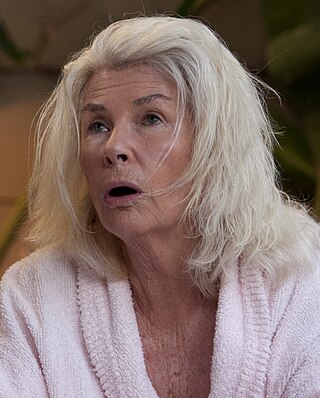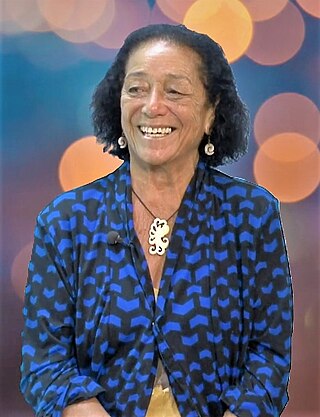Related Research Articles

Howea forsteriana, the Kentia palm, thatch palm or palm court palm, is a species of flowering plant in the palm family, Arecaceae, endemic to Lord Howe Island in Australia. It is also widely grown on Norfolk Island. It is a relatively slow-growing palm, eventually growing up to 10 m (33 ft) tall by 6 m (20 ft) wide. Its fronds can reach 3 m (10 ft) long. The palm gets its common name from the capital of Lord Howe Island, Kentia, and the genus name, Howea, from the island itself. The species name “forsteriana" is after Johann Reinhold Forster and Georg Forster, father and son, who accompanied Captain Cook as naturalists on his second voyage to the Pacific in 1772–1775.

Lord Howe Island is an irregularly crescent-shaped volcanic remnant in the Tasman Sea between Australia and New Zealand, part of the Australian state of New South Wales. It lies 600 km (320 nmi) directly east of mainland Port Macquarie, 780 km (420 nmi) northeast of Sydney, and about 900 km (490 nmi) southwest of Norfolk Island. It is about 10 km (6.2 mi) long and between 0.3 and 2.0 km wide with an area of 14.55 km2, though just 3.98 km2 of that comprise the low-lying developed part of the island.
Patricia Anna Lovell, commonly referred to as Pat Lovell, was an Australian film producer and actress, whose work within that country's film industry led her to receive the Raymond Longford Award in 2004 from the Australian Film Institute (AFI).

Robyn Anne Nevin is an Australian actress, director, and stage producer, recognised with the Sidney Myer Performing Arts Awards and the JC Williamson Award at the Helpmann Awards for her outstanding contributions to Australian theatre performance art. Former head of both the Queensland Theatre Company and the Sydney Theatre Company, she has directed more than 30 productions and acted in more than 80 plays, collaborating with internationally renowned artists, including Richard Wherrett, Simon Phillips, Geoffrey Rush, Julie Andrews, Aubrey Mellor, Jennifer Flowers, Cate Blanchett and Lee Lewis.
Robyn Mary Parker, is a former Australian politician, and was a member of the New South Wales Legislative Assembly representing Maitland for the Liberal Party from 2011 to 2015 and was previously a member of the Legislative Council of New South Wales between 2003 and 2011. Parker was the New South Wales Minister for the Environment and the Minister for Heritage in the O'Farrell government from 2011 until April 2014. Parker was succeeded by Rob Stokes in the Baird cabinet.

Sir Lorimer Fenton Dods was a pioneer of specialised health care for children who founded, with assistance from Dr John Fulton and Douglas Burrows, the Children's Medical Research Foundation. He is considered one of Australia's most influential paediatricians.

SS Makambo was a steamship first owned by Burns Philp & Co. Ltd. She was built in Port Glasgow in Scotland and named after an island in the Solomon Islands. She carried both passengers and cargo and was principally used on routes between eastern Australia and islands in Melanesia and the Tasman Sea. In November 1908 Jack and Charmian London travelled from Guadalcanal to Sydney on the Makambo after abandoning their ill-fated circumnavigation of the world on the Snark, a 45' sailing yawl.

Cythera, a 50-foot (15 m) steel ketch, designed and built single-handedly by Peter A. Fenton, was the first subject of modern-day piracy in Australian history and set a legal precedent to laws in effect from 1858.
Elizabeth Laura Mullinar is a London-born former film casting consultant. She is one of the founders of Advocates for Survivors of Child Abuse and is the Founder of the Heal For Life Foundation and created the TREE Model of Trauma Recovery. Mullinar is regarded as an expert in the field of trauma. In 2019, she presented the TREE model at the International Congress of Trauma and Attachment alongside other trauma experts including American Psychiatrist Daniel J. Siegel, and British Psychoanalyst Peter Fonagy OBE.
Laurie Baymarrwangga (Gawany) Baymarrwaŋa was the senior Aboriginal traditional owner of the Malarra estate, which includes Galiwin'ku, Dalmana, Murruŋga, Brul-brul and the Ganatjirri Maramba salt water surrounding the islands and inclusive of some 300 other named sites. She devoted her life to the intergenerational transmission of the ancestral language and knowledge of her homelands on the Crocodile Islands, for the benefit of future generations.

Coprosma huttoniana is a flowering plant in the family Rubiaceae. The specific epithet honours Ian Hutton, the Lord Howe Island based naturalist who discovered the plant and recognised it as a new species.
Psychotria carronis, commonly known as the black grape, is a flowering plant in the coffee family. The specific epithet honours William Carron (1823–1876) who collected plants on Lord Howe Island for the Royal Botanic Gardens, Sydney.
Melicytus novae-zelandiae subsp. centurionis is a flowering plant in the family Violaceae. It is a subspecies of Melicytus novae-zelandiae, known in New Zealand as coastal mahoe. The subspecific epithet honours the military Captain James Doran McComish (1881–1948), who made several visits in the 1930s to collect plants on Lord Howe Island.

Beryl Lucy Mills was an advertising agent, librarian, and beauty pageant titleholder. She was the first woman to win the Miss Australia quest in 1926
Hendrika Bestebreurtje Cantwell is a German-born American retired physician, professor emerita of pediatrics at the University of Colorado Denver, advocate for abused and neglected children, and parenting educator. She was one of the first physicians in the United States to work for a child protection agency, serving with the Denver Department of Social Services from 1975 to 1989. Her work there brought her in contact with an estimated 30,000 cases of suspected child abuse and she testified as an expert witness in thousands of court cases. An author of peer-reviewed journal articles, book chapters, and teaching manuals on the detection and treatment of child abuse, she has also conducted workshops and training programs for professionals throughout Colorado. She was inducted into the Colorado Women's Hall of Fame in 1990.
Robyn Ann Layton is an Australian lawyer, who worked in a diverse range of legal roles, including as a judge of the Supreme Court of South Australia and judge of the South Australian Industrial Court. She was author of the South Australian Child Protection review known as "the Layton report" in 2003, and a member and then chair of the International Labour Organization's Committee of Experts on the Application of Conventions and Recommendations from 1993 to 2008.
Shurlee Lesley Swain, is an Australian social welfare historian, researcher and author. Since August 2017 she has been an Emeritus Professor at the Australian Catholic University (ACU).

Florence Ngatokura "Johnny" Frisbie, also known as Johnny Frisbie Hebenstreit, is a Cook Islands author. Her autobiographical children's novel, Miss Ulysses of Puka-Puka (1948), was the first published literary work by a Pacific Islander woman author.
Jack Beaumont Earl, was an Australian sailor and noted marine artist. He achieved fame as the captain of the Kathleen Gillett, the second Australian yacht to sail around the world. He was also one of the founders of the Sydney to Hobart Yacht Race.
Deborah Jane Brennan is an Australian Professor in social policy research, who was awarded a Member of the Order of Australia, in the Queens Birthday Honours list, in 2022, for her significant service to social policy research, gender equity and tertiary education.
References
- 1 2 3 4 5 6 Stephens, Tony (22 February 1988). "Rosemary Sinclair". The Sydney Morning Herald. Retrieved 28 March 2016.
- 1 2 "I am no Beauty, says Rosemary:Modest Miss Australia". The Sun-Herald. 6 November 1960. Retrieved 28 March 2016.
- 1 2 3 4 Glascott, Joseph (18 September 1985). "Miss Sinclair speaks up for Lord Howe Island". The Sunday Morning Herald. Retrieved 28 March 2016.
- ↑ "Rosemary Edna Sinclair". honours.pmc.gov.au. Retrieved 22 October 2019.
- ↑ "Rosemary Edna Sinclair". honours.pmc.gov.au. Retrieved 22 October 2019.